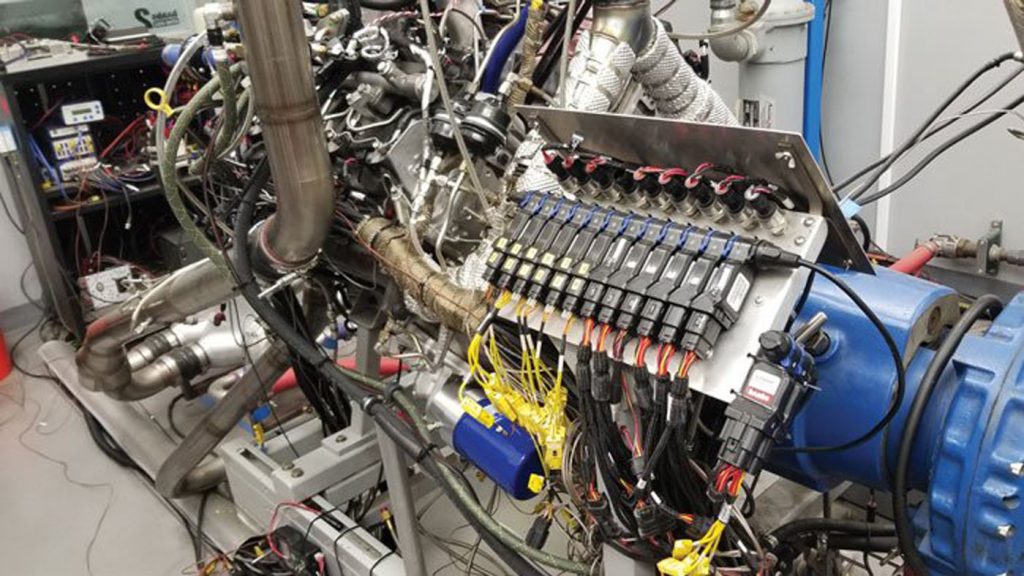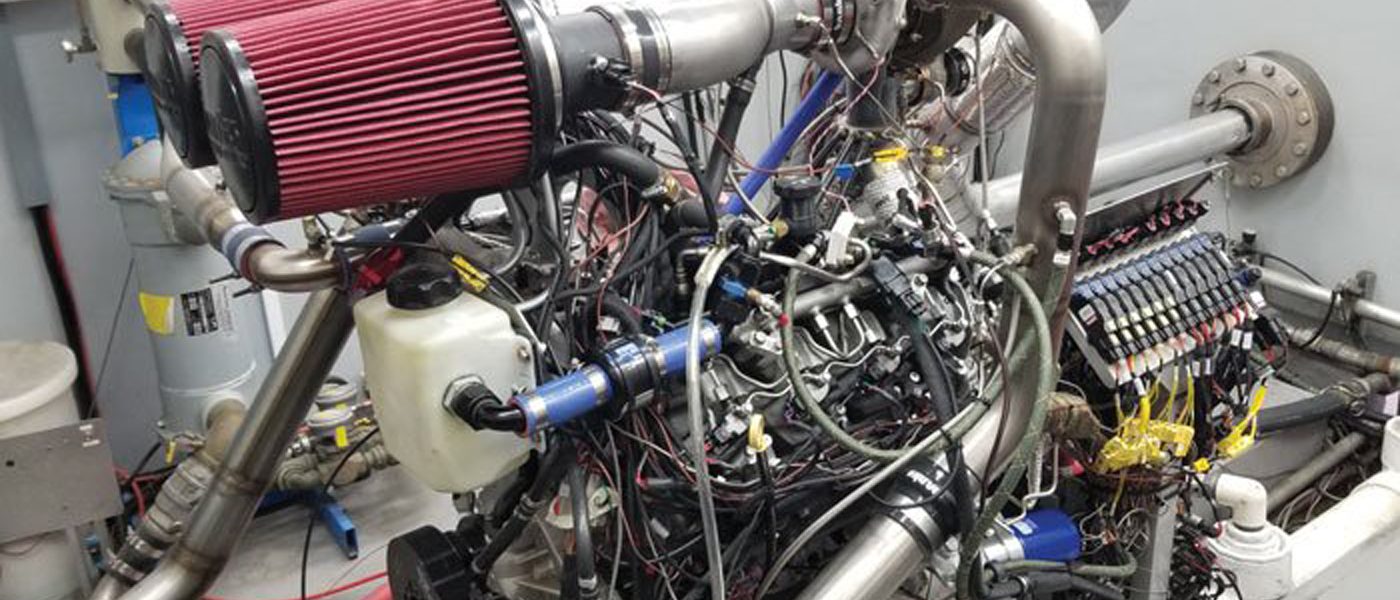Testing that Goes Beyond Performance
Just about anyone can make an engine and call it a “high-performance” or “racing” engine. In the old days, you’d see magazines with glossy pictures and headlines touting huge horsepower numbers, but in today’s world, you can actually see and hear the power being made. YouTube is filled with videos of engines and vehicles on dynos making power. The dyno operators crank it up ’til the power peaks and immediately pull out of the throttle because they made the number they liked. And yeah, that engine actually did make power — but for how long? If these 10-second engines were put to a test where they’d have to sustain hours at wide-open throttle would they survive? Since the 1960s, Banks engines have always been built with endurance in mind, and in many cases, that means something that would last an entire season with minimal upkeep. We also supply powerplants to the military, and those engines will see some of the most extreme conditions known to man — far harsher than a 10-second dyno sweep.
Let’s take a look at what goes into testing engines built for our military. Banks Tech, sister company of Banks Power, works closely with our armed forces and defense contractors on a variety of propulsion projects, and is responsible for every engine that is supplied to Oshkosh for use in the Joint Light Tactical Vehicle (JLTV) program. Every engine that comes off of the assembly line from the engine build plant in Azusa, CA must be dyno checked before leaving. That one test, however, had many tests that proceeded it. In order to produce an engine for the military means that it had to pass the NATO 400 hour or a “Double-NATO” test, which is actually the 400-test done twice consecutively. These tests must use all the fuel, lubricants and anti-freezes that NATO specifies for use in the whole military fleet. One of the test parameters must have the smoke emissions measured throughout the entire run, and the recorded range cannot exceed a specific amount or it fails, so rolling coal isn’t an option

The standard NATO endurance test duration is 400-hours, which is divided into four parts of 100 hours each. Each 100-hour period is made up of ten 10-hour segments, and at least five times during the 100 hours, the engine needs to be shut down for a minimum of eight hours. At the end of each 100-hour period normal maintenance and adjustments is permitted, and the engine will be submitted to a full-load performance check. The double-NATO test is an insane 800-hour test that is basically, as its title implies, the 400-hour test done twice!
Variables that must be monitored during the NATO:
Main Values
Speed (engine output shaft)
Torque (engine output shaft)
Temperature of ambient air
Atmospheric pressure
Humidity
Air and Gases
Inlet air temperature
Inlet or cylinder inlet depression
Inlet airflow (performance test only)
Air temperature and pressure in the inlet manifold
Exhaust temperature
Exhaust backpressure
Lubrication and Cooling
Oil temperatures and pressures
Coolant temperatures into and out of the engine
Flow rates of fluids to cooling devices external to the engine
Oil consumption
Fuel
Fuel temperature
Fuel consumption
Miscellaneous
Blow-by
Smoke density
Exhaust gasses analysis

These brutal tests are at max load, wide-open throttle, and truly push engines to their limits. Throughout the test, the engine must produce at least 95% of the initial measured power. If something happens where the engine dips below that amount and can’t be fixed with normal maintenance or adjustments it’s considered a “minor failure.” Repairs and procedures must be accurately documented, the test is terminated, and must start at zero hours. A “major failure” is one in which the engine stops or power is below 95% and can’t be reached with normal maintenance or adjustments. This failure also has to be recorded, as well as anything that was tried to get the engine back on track, and you guessed it… the clock goes back to zero. That means that if the engine suffers a failure at hour 395 you still have to start all over again from the very beginning.
Now let’s talk testing accuracy. Here are just a few of the measurements that need to be recorded.
Output speed: must be accurate within +/- 0.5%
Torque: must be accurate within +/- 0.5%
Fuel consumption: +/- 0.5%
Temperature: intake air +/- 1 degree C
Atmospheric pressure: +/- 0.7 mbar
Air and gas pressure: +/- 50 mbar
Induction and exhaust pressure and depression: +/- 0.250 mbar
Fluid pressure: +/- 0.250 mbar
Building a true performance/endurance engine takes a lot, especially if it’s for the military. It’s not a quick slam on the throttle for a momentary power number. There is no “pass go” card. No fudge factor. It’s recorded and repeated. This is engine building at its most serious, and it’s power that can save lives under just about any condition.

